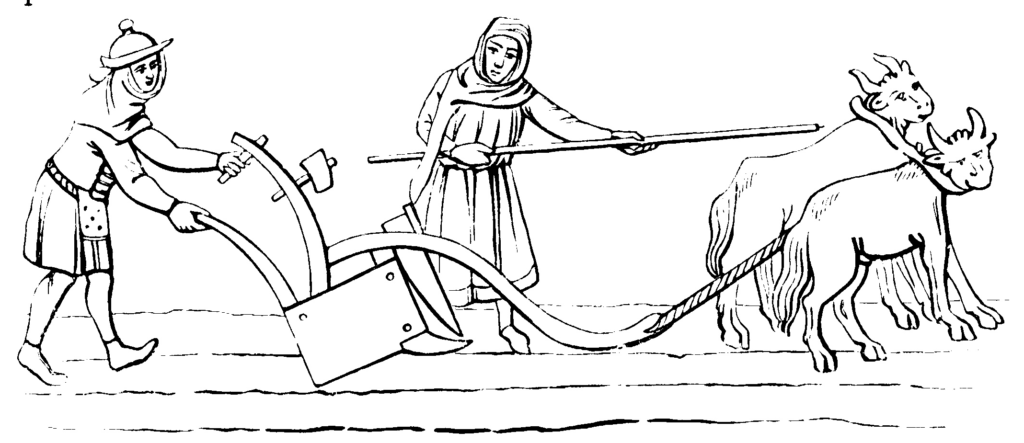Norman Morden

Ploughing with oxen
The Domesday Survey of 1086 was commissioned by William the Conqueror to find out what and how much each landholder held in land and livestock, and what it was worth:
The Abbey of Westminster holds Morden itself. Before 1066 it answered for 12 hides, now for 3 hides.
Land for …. In lordship 3 ploughs; 8 villagers and 5 cottagers with 4 ploughs. 1 slave.
1 mill at 40 shillings.
Value before 1066 £6; now £10; however, it pays £15.
Later documents refer to 8 crofts, located between the church and Lower Morden Lane, which belonged to, but were detached from, the tenements in Lower Morden. It is likely that these crofts had been the location of the Domesday villain settlement, before its migration to Lower Morden.
The cottagers would have been employed on the abbey’s demesne estate, run from the Morden Hall site, and would have lived nearby, probably in Central Road, where a 20-acre holding survived into the late 13th century before being fragmented into smallholdings.
It was common practice for manorial slaves to be settled on smallholdings, and a 3-acre holding mentioned in 1225 and 1332 in the tenure of the Sweyn family had probably been the home of the Domesday slave. It was located next to the manorial centre, within the grounds of the present Morden Lodge. The tenant was required to perform a range of specific services on the estate, rather than the general labour services due from customary tenants.
In addition to the arable land the tenants would have had allotments in the meadows and rights to firewood, turf and grazing in the manorial waste known later as Morden Common.
 MERTON HISTORICAL SOCIETY
MERTON HISTORICAL SOCIETY